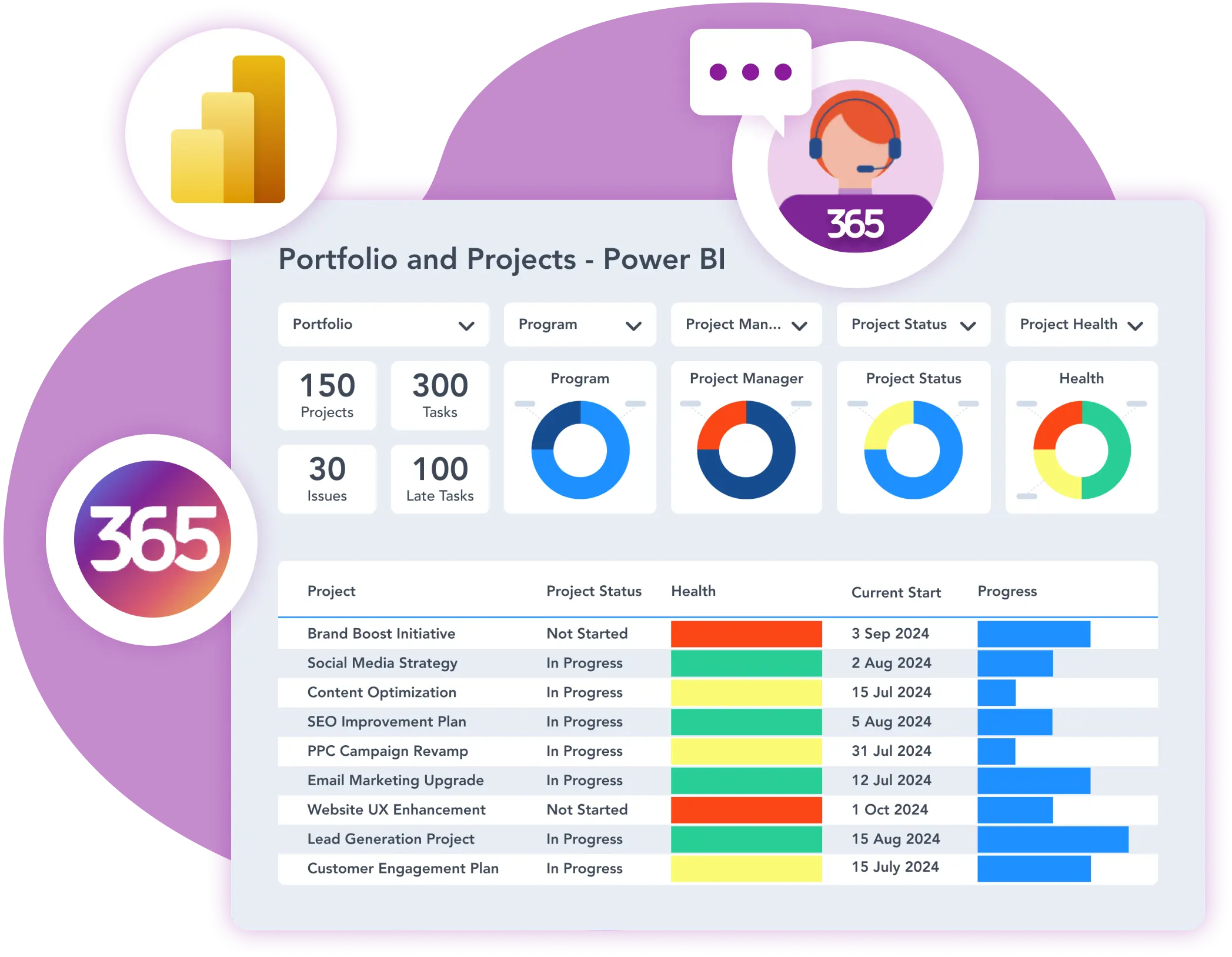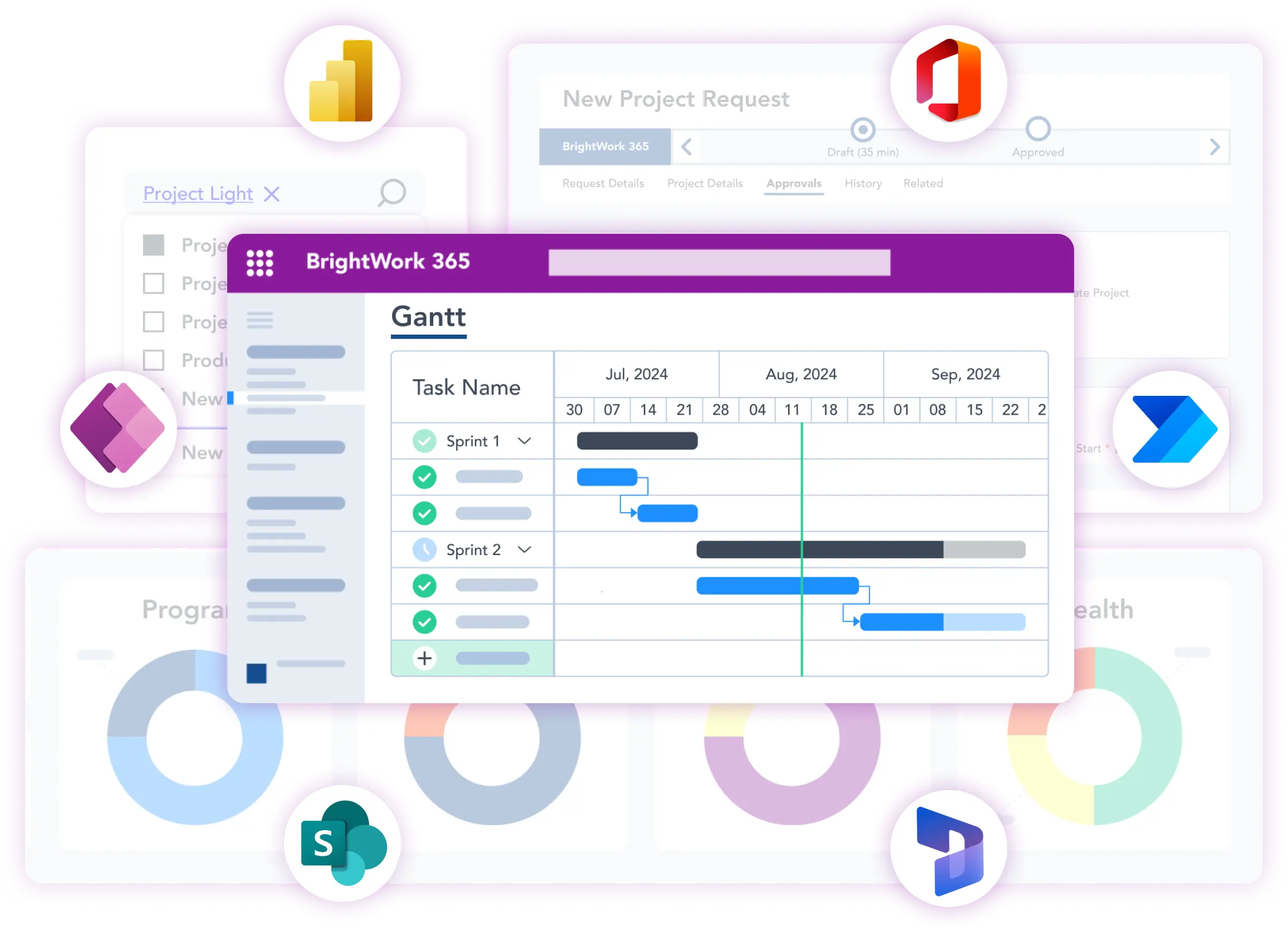Overview
Setting up a Project Management Office (PMO) can be an elaborate process, but worth it! As your project, program, and portfolio management evolves, you need a PMO to put more advanced and structured processes in place. In setting up a PMO, you should know what framework and methodologies will align with your strategic goals and also suit your project teams.
The aim of this article is to assist you in selecting the most suitable PMO (Project Management Office) framework and methodology based on your business goals, project complexity, and industry requirements. It will provide insights into different PMO structure and methodologies, helping decision-makers such as PMO leads to optimize project execution and governance.
How to Build a High-Performance Project Management Office (PMO)
An in-depth guide on setting up a PMO by leveraging your Microsoft 365 platform.

Understanding PMO Frameworks
A PMO framework provides a structured approach to managing projects within an organization. The five main types of PMO frameworks identified by SMEs in the PMI’s Pulse of the Profession are:
1. Organizational/Business Unit PMO
This PMO framework operates within a specific business unit, division, or department. It focuses on projects that align with the goals and priorities of that specific unit. This PMO provides tailored governance, support, and resources for departmental initiatives. It also ensures that projects contribute to the operational success of the business unit.
2. Project-Specific/Program Office
Such a PMO is established for a single project or a program with a defined scope and timeline. It focuses on managing and delivering the assigned project efficiently. This PMO framework ensures adherence to project methodologies, standards, and best practices. Such a PMO unit is usually disbanded once the project or program is completed.
3. Project Support/Services PMO
A Project Support or Services PMO framework provides administrative support and project controls across multiple projects. It focuses on standardizing processes, reporting, documentation, and risk management. This PMO framework acts as a central support function without directly managing projects. It works on enhancing project efficiency by implementing project management best practices and templates.
4. Enterprise/Global PMO
An Enterprise or Global PMO, also known as a Strategic PMO, oversees project management across the entire organization. The role of such a PMO is to align projects with corporate strategy and business objectives. Such PMO framework ensures consistency in project management methodologies and governance. It also provides visibility into enterprise-wide project performance and resource allocation.
5. Center of Excellence/Center of Competency
This PMO framework is more high level and focuses on developing and enhancing project management capabilities. This PMO provides training, mentorship, and best practices to project managers and teams. It drives innovation, continuous improvement, and process optimization. This PMO framework establishes a knowledge hub for project management expertise within the organization.
Also note, PMO frameworks are different from the types of PMOs. Find a detailed guide on the different types of PMOs, here.
5 Project Management Methodologies
PMO methodologies define the approach and processes used to manage projects. As per PMI’s Pulse of the Profession® 2024 Report, ‘choosing the right approach is just the beginning.’ Here are some of the most commonly used methodologies:
1. Traditional/Waterfall Methodology
This project management methodology is best for structured projects with well-defined requirements. It is suitable for industries like construction, manufacturing, and regulated sectors. This methodology provides a sequential approach with clear milestones, where each phase must be completed before the next begins. It ensures thorough documentation and predictability but can be rigid in adapting to changes.
2. Agile Methodology
Agile project portfolio management methodology is ideal for dynamic and fast-changing environments. It encourages iterative development, collaboration, and continuous feedback. Agile methodology works well for software development, IT projects, and startups. It uses frameworks like Scrum and Kanban to promote flexibility and incremental progress. It also involves cross-functional teams working in sprints to quickly adapt to evolving requirements.
3. Hybrid Methodology
The Hybrid project management methodology combines elements of both Waterfall and Agile. Hybrid is suitable for organizations that require structure but also need flexibility. It is common in enterprises transitioning from traditional to modern approaches as it leverages the best of the two approaches: Waterfall and Agile. Hybrid methodology incorporates Waterfall for planning and documentation while leveraging Agile for execution and iteration.
4. Lean Project Management
This PMO methodology focuses on efficiency and eliminating waste The Lean methodology emphasizes on continuous improvement (Kaizen) and value stream mapping. It encourages teams to focus only on activities that add value to the customer, reducing inefficiencies, thereby working well for process-driven industries like manufacturing and service delivery.
5. PRINCE2 (Projects in Controlled Environments)
PRINCE2 project management methodology is a structured methodology with clear roles and responsibilities. This is a highly scalable methodology, used mostly in government and large enterprises. It emphasizes governance, risk management, and structured decision-making. You can deploy this methodology to divide projects into manageable stages with defined roles for stakeholders and project managers.
How to choose the right PMO Framework and Methodology (5 Factors)
1. Assess Organizational Needs
Determine whether your organization requires strict governance, flexibility, or a combination of both.
2. Consider Industry Standards
Certain industries may have regulatory or compliance needs that favor specific frameworks.
3. Evaluate Team Expertise
Choose a methodology that aligns with the skills and experience of your project management team.
4. Look at Project Complexity
Larger and more complex projects may require structured methodologies like PRINCE2, while smaller projects may benefit from Agile.
5. Flexibility of the current tools
Ensure the chosen framework and methodology can scale with organizational growth and evolving project requirements. To achieve this, you will need to ensure that your teams are equipped with a flexible, scalable, and extendable tool.
Choosing the right tool to support your PMO Framework
The right tool and technology for you would mean that best supports your current working environment and platform. Ideally, you would like a minimum learning curve, low investment, assured data security to ensure quick adoption. For instance, BrightWork 365 project management solution, built on Microsoft 365 (Power Platform), is a flexible and configurable tool. Being built on and for the Microsoft environment, PMOs can easily extend the BrightWork 365 by integrating it with the wide range of Microsoft 365 apps.
If your projects are already managed in the Microsoft 365 cloud, and/or if your teams are already familiar with the Microsoft apps – you have a huge advantage of quickly adopting and setting up your PMO within Microsoft 365. You can easily reduce resistance and reach higher adoption with BrightWork 365.
Conclusion
Selecting the right PMO framework and methodology is critical to ensuring effective project management and business success. By aligning your choice with organizational goals, industry standards, and team capabilities, you can create a high-functioning PMO that delivers measurable value and drives strategic initiatives forward. Whether you opt for a traditional, agile, or hybrid approach – the key is to remain adaptable and continuously optimize your PMO to meet evolving business demands.
Setting up a centralized PMO with Microsoft 365
BrightWork 365 leverages Microsoft 365, Power Platform, and Teams to enable PMOs with a centralized project management system.


